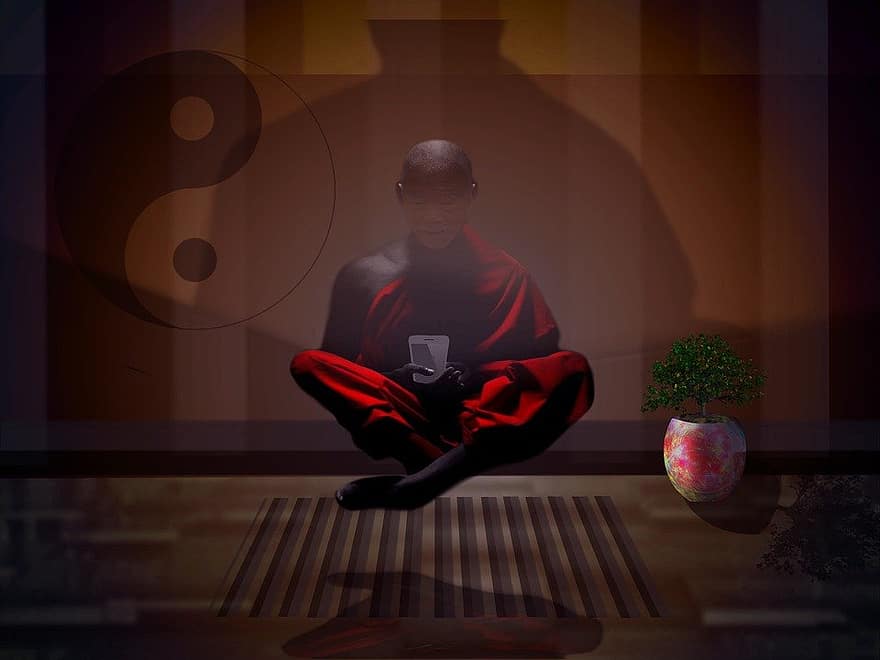Ancient Sin Meets Social Media Distraction: Acedia & You
Have you felt listless when working? "Acedia" - originally a spiritual term used by Christian monks - describes this state which often correlates with social media addiction. Here are 5 ways to fight back.
Steven Puri
Save time with Sukha
As boundaries between work and personal life are increasingly blurred, the ancient monastic concept of "Acedia" has found a new relevance. Originally a spiritual term used by Christian monks in the 4th century, Acedia described a state of listlessness, an existential ennui that made the rigors of monastic life feel burdensome. Today, in the context of the modern workplace, Acedia correlates strongly with social media distraction:
When you're bored, it's very easy to pick up that phone...and boom there went your afternoon.
The Roots of Acedia
The term 'Acedia' comes from the Greek 'akēdeia,' which means lack of care. It was considered a critical problem in monastic communities. Monks struggling with Acedia were described as being unable to stay in their cell, restless, and constantly looking for distractions from their spiritual duties. This state was not just a lack of physical activity but a deeper spiritual lethargy.
Acedia in the Contemporary Workplace
Fast forward to the 21st century, and Acedia finds its parallel in the modern workplace. The 'cell' can be likened to the office cubicle or the home office. The distractions, however, have evolved significantly. Instead of the scenic views or the communal activities that might have tempted a 4th-century monk, today's professional is bombarded by the constant lure of social media.
Social Media: A Modern Hell
Social media platforms, with their endless streams of content, notifications, and social interactions, present a potent distraction. They provide an easy escape from the monotony or challenges of work. This distraction is not just a mere procrastination tool; it's a form of escapism that aligns eerily well with the ancient concept of Acedia. This social media craving springs from a deep-seated restlessness and dissatisfaction with one's current state, leading to a constant search for something more fulfilling, exciting, or entertaining.
The Psychological Impact
The constant switching between work and social media can have a profound psychological impact. It fragments attention, reduces productivity, and often leads to a sense of guilt or inadequacy. This mirrors the emotional state described in ancient texts on Acedia, where the afflicted felt a sense of despair and worthlessness.
Impact on Work and Personal Life
The intrusion of social media into the workplace disrupts not only individual productivity but also the collective efficiency of teams. Projects suffer delays, and the quality of work can diminish. On a personal level, the inability to focus and the constant need for stimulation from digital sources can lead to burnout, anxiety, and a decrease in overall life satisfaction.
Combating Acedia in the Age of Social Media
Recognizing the parallels between Acedia and social media distraction is the first step in addressing this modern challenge. Here are 5 strategies to win your life back:
1. Setting Boundaries

Just as ancient monks were advised to stay in their cells and confront their restlessness, modern professionals need to set boundaries for social media use. This could mean designated times for checking social platforms or using apps that limit social media usage during work hours.
2. Mindfulness and Self-Reflection

Incorporating mindfulness practices can help in staying grounded and present. Regular self-reflection can also aid in understanding the underlying causes of the distraction, whether it's work-related stress, personal issues, or a lack of engagement with one's tasks.
3. Cultivating a Meaningful Work Environment

Creating a work environment that is engaging and fulfilling can reduce the temptation to seek distractions. This involves finding purpose in one's work, setting challenging yet achievable goals, and fostering a supportive and collaborative workplace culture.
4. Embracing Monotony

Part of the struggle against Acedia involves embracing the monotony inherent in some aspects of work. Recognizing that not every task will be exciting or fulfilling, and finding satisfaction in the completion of these tasks, is a skill that can counter the restless urge for constant stimulation.
5. Seeking Professional Help

When all else fails and the distraction is severe and impacts mental health, seek professional help. This could involve therapy or counseling to address underlying issues.
Conclusion
The concept of Acedia, once confined to the spiritual struggles of monastic life, has found a new expression in our age of social media. The challenges it poses are not just about productivity but touch upon deeper issues of engagement, fulfillment, and mental well-being. By understanding and addressing these challenges, we can find a healthier balance between our work and the digital world.
We at The Sukha hope these 5 strategies not only improve your professional lives but also enrich your personal and spiritual well-being, staying true to the lessons from centuries past while navigating the complexities of the modern world.
Be well.

